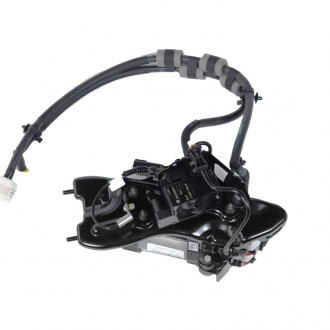

You even have to press a “Confirm” button on the touchscreen to acknowledge you’re about to release the beast. First, put the car in Sprint mode, because the car reduces power in the other two modes for efficiency and because, dude, you don’t need 1,050 horses when driving to Whole Foods. It hits 60 mph in 2.6 seconds, and achieving it couldn’t be easier. Why the hell was I going on about touchscreens and regenerative braking for so long? Lucid turned the dial down ever so slightly to maintain the Dream Edition’s supremacy for the company’s earliest of adopters, but the Performance still manages 1,050 horsepower and 921 pound-feet of torque. We start off in the Lucid Air Grand Touring Performance, a new version that closely mirrors the limited-run Dream Edition that produced 1,111 horsepower and hit 60 mph in 2.5 seconds. Its extreme level of braking is, perhaps paradoxically, more appreciated in the sport modes as it more closely approximates the sort of heavier braking you’d do while hustling along a mountain road.īut enough about slowing down. The amount of automatic regenerative braking provided by Standard actually is reduced in the two sport modes, Swift and Sprint, but High remains the same across all modes. Maybe with practice it’ll be worth the extra electrons recouped, but the Standard setting is still awfully strong, allowing for one-pedal driving and coming to a complete stop by itself. It was difficult to finesse the throttle enough to avoid a queasy, yo-yo tendency that’s bound to make your passengers (or you) ill. This is the first electric car I’ve tested where the maximum regenerative brake mode was actually too strong. The car defaults to its “Smooth” drive mode, but will remember which of the two levels of brake regeneration you last used: Standard or High. The transmission selector is an electronic column shifter comparable to Mercedes’ design, but with Lucid’s own piece of hardware.

Approach the car, the door handles pop out, climb in and put your foot on the brake to tell the car you’re ready to go. There are no buttons on the key fob, either. Like some other electric cars, there’s no start button. You shouldn't need to wear a hat in a car. They're tinted, fine, but our local star is a rather powerful thing. The primary complaint? The vast glass windshield that goes up and over the front seats, with another panel in the rear, that don't have shades. This is a very expensive car, and the cabin looks and feels the part. As they say, the devil is in the details, and at least in the cars we sampled, Lucid has nailed them. The rest of the cabin is then a treat for your eyes and fingers, with familiar elements like soft leather, faux suede and open pore wood mixing with novel elements like alpaca wool textile and a two-tone color scheme that sees the front and rear seats in different-color leather. There are still some buttons in the cabin, and they look and move with a richness that often gets missed by smaller luxury automakers (see Aston Martin). Oh wait, he was and his name is Mike Bell. You’d think someone who used to work for Apple was in charge of it. In short, it’s easy to use and has the potential to improve thanks to over-the-air updates. The screens are also nicely laid out with large, clear icons and easily identified menus. The screen to the left of the instruments in the 34-inch curved display panel controls things like lights and wipers, while the large touchscreen bridging the console and lower dash does the stuff buttons on the console and lower dash have traditionally done such as climate and drive controls. There are screens aplenty, but their placement and control layout are largely similar to what you’d find in a traditional button-strewn interior.
#LIFING RAM 1500 AIR SUSPENSION DRIVER#
You climb into its driver seat to find an environment that seems perfectly familiar, and not because the switchgear and tech interface were done by some other, familiar company (they were not).

The Lucid Air manages to erase that skepticism very quickly. Something will almost certainly be borrowed from the parts bin of another manufacturer. One expects a few rough edges, both literally and figuratively, with a few haphazard choices here and some janky elements there. – A new car from a new company breeds a certain degree of skepticism.


 0 kommentar(er)
0 kommentar(er)
